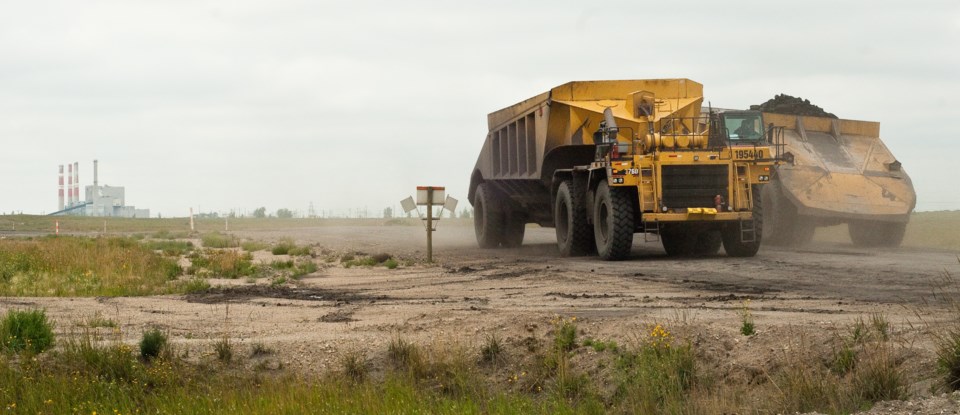Twice in the space of 24 hours, I was tagged on Facebook with relation to a post or story about automation and its threat to jobs.
The first post was from a man named Dave Shook, a self-described automation engineer working in the oilpatch. It’s got a lot of people talking, because in three days it was shared 6,800 times. On April 12, he stated, in part, “If you used to work in the oilpatch and you don't any more, then I am your enemy, not the government. I have been helping oil companies reduce maintenance and operating labour cost per barrel for 20 years. And business is booming. It has never been this strong. Alberta companies are spending millions - billions - of dollars to replace people with computers. I can't name names because of non-disclosure agreements with clients, but if you look around, you will see that companies are laying people off and maintaining production.
“The oil industry is in fact late to automate. It's about 10 years behind manufacturing, and 20+ years behind refining and chemicals. Twenty years ago there were 315,000 people employed in forestry, pulp and paper, etc. in Canada. Now there are 186,000. Those jobs are never coming back.
“The problem with oil industry employment is structural, and it's global. If our companies don't automate, they will go under, because other companies are automating too. And lots of companies outside Alberta are producing oil at a loss. It's a case of he who bleeds to death last, wins.
“This isn't the government's fault. All the government can do is help people adapt - by upgrading and adding more value in the province, by helping people retrain, and by diversifying the economy.”
The second piece was a Canadian Press story on April 14 entitled, “From Hawkesbury to Estevan, documents show towns to be hit hardest by automation.”
This had me scratching my head why Estevan was singled out, but the story said, “Federal officials expect that rural areas and small towns will feel the biggest negative effects of automation, as well as regions ‘dependent on high-risk sectors like manufacturing or mining,’��while��gains from technological advances accrue to large urban centres.”
Ah, so it’s the mining part they must be targeting Estevan for.
Some of the first diatribe is rather self-serving, coming from an automation engineer.
Sure, there are some areas where automation is taking over. The prime example is the mining truck operator position in the Fort McMurray oilsands mines. In the next five or so years, hundreds of positions will disappear in that line of work. The mining trucks are С����Ƶ turned into robots, autonomous vehicles that do one repetitive task in a totally enclosed environment.
This might be where the second piece is suggesting that automation could be coming. Maybe someone thinks that the coal haulers could be automated to driverless operation. However, the coal mines here are not, like oilsands mines, an entirely enclosed system. Something tells me having robotic 140 ton coal haulers crossing a public highway without a human behind the wheel is not going to happen.
Estevan’s mining jobs are more directly threatened by Justin Trudeau’s plan to “phase out coal” than any robot.
Automation has also come, in a limited extent, to drilling rigs, with the advent of the automated drilling rigs. Instead of running with a crew of five, they typically run with a crew of three, as all the pipe-handling on the rig is done through robotic controls. They are still controlled by the driller in the cab, with joysticks, but the roughneck’s jobs is greatly diminished for actual muscle-work.
However, there are still around 20 people working with that rig, including the geologists, water hauler, directional driller, measure while drilling, rig manager, truck drivers, and all the ancillary people who service it like the mud man, bit man, rig welder, etc. None of these are С����Ƶ automated out of existence. In Saskatchewan, at least, automated drilling rigs are few and far between. Next to no one has been building new rigs in Western Canada in years.
The former CEO of Crescent Point had told me they wanted to automate their fields to reduce the number of people working out there. But there's only so much you can do with a SCADA (supervisory control and data acquisition) system. You still need operators to check wells, repair and service them.
And the autonomous oilsands haulers does not translate into the broader oilfield. That robotic semi is not going to be able to drive out, in the middle of the night, in a storm, to a new lease established last week down a back road to pick up a load of oil or produced water from a single well battery. Nor will it be dodging wide load farm equipment in the summer.
Robots will no be able to assemble and disassemble a rig on a rig move, something akin to a ballet with heavy equipment.
Robots do the welding on large pipelines, but they are positioned and monitored by human welders.
In pipelining, some of the muscle has been replaced by machine. The cantankerous "skid hustler" machine (of which there are only a few around, I understand) can replace the work of a half dozen men restacking skids after lowering in picks up the pipe.
So yes, automation is reducing some of the jobs. Many of these are the more dangerous, more muscle-bound jobs. And that’s not a bad thing.��
But I think the automation engineer might be drinking a little too much of his own Kool-Aid, at least at this point.
Time will tell.
��
Brian Zinchuk is editor of Pipeline News. He can be reached at [email protected].




